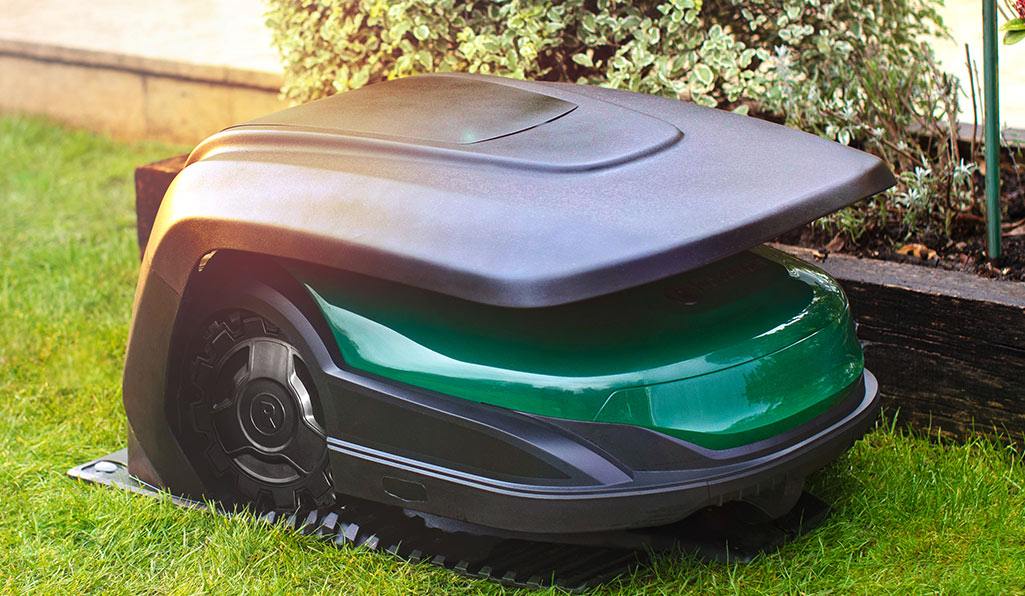How long does the battery of a robotic lawnmower last?
01.05.2021The lifespan of a battery depends on several conditions. First, there is of course the type of battery, which can be more or less sensitive to weather conditions sometimes. Furthermore, the length of time the robot spends mowing the lawn contributes to wear and tear. In regards to efficiency, battery power is essential. Naturally, the robot should mow for as long as possible before returning to its charging station.
What is the battery power of the robotic lawnmower important for?
The longer the robot spends time on the lawn and the shorter the time the battery needs to recharge, the faster the robot can complete its work.
These factors influence battery performance
- frequency of use and therefore the number of charging cycles
- hot or cold conditions
- overcharging or deep discharge
Selecting the optimal area capacity
When you purchase a smaller robotic lawnmower, you sacrifice battery power. If the manufacturer's specification of the area output is close to your lawn size, the robot virtually has to be in continuous operation in order to cope with the area.
The consequence is not only that you will hardly have time to enjoy your garden in peaceful silence but also that many charging cycles will need to be made in a comparatively short time. This decisively reduces the service life of the battery, as the total power is determined via charges.
The lifespan of different battery types
The lifespan of a battery basically depends on the battery type, so a general statement in this regard is really not possible. After all, charging and overcharging, sunlight or cold conditions all play a key role in how long the battery ultimately lasts.
Earlier battery types like the NiMH battery had the so-called memory effect. That meant the time you recharged the battery was decisive, as it "remembered" the battery status over time and the charge capacity could decrease without the battery actually being defective. Moreover, a deep discharge quickly led to the battery no longer being usable. The advantage, on the other hand, was the high capacity, which led to fewer charging cycles.
Li-ion battery as the new standard
Due to its favorable characteristics, the lithium-ion battery has become almost universally accepted for robotic mowers, as in many other electronic devices. The energy density of these batteries is high; they achieve considerable performance even with a compact design and light weight - ideal for powerful robotic lawnmowers. Although the device is sensitive to extreme temperatures and deep discharge, Li-ion batteries are considered much more robust than NiMH batteries.
Battery types in comparison
| Li-Ion-Battery | Li-Ironphosphate-Battery | NiMH-Battery | |
| Self-drain rate / per month | 6-8 % | 2-4 % | 5-10 % or as a variant with 1-2 % |
| Temperature range | 10-35°C (50-95°F) | 10-40°C (50-104°F) | 5-40°C (41-104°F) |
| Average lifespan | 4 years | 5 years | 6 years |
| Charging cycles | 500-800 | 1.000-2.000 | 350-500 |
However, now there are also particularly powerful Li-Ion batteries that can easily cope with up to 2,000 charging cycles before the charging capacity decreases.
How to positively influence the battery performance
With good care and maintenance, the battery of a robotic lawnmower will last longer. Since the number of charging cycles is pivotal to when the battery of a robotic lawnmower reaches its age limit, you can increase the service life by reducing the number of charging cycles.
- Reduce mowing times during dry periods when the lawn grows slower.
- Choose a robotic lawnmower whose area output is not too close to your lawn size. This way, mowing times can generally be kept shorter. In addition to the maximum area output, some manufacturers also provide a recommendation for which lawn size the corresponding device is particularly suitable. If in doubt, please ask your dealer. If necessary, it is better to choose a model that is designed for larger areas than is actually required.
- Do not expose the robotic lawnmower to excessive heat. For example, avoid mowing in the blazing, midday sun of summer and place the charging station in a shady location. Alternatively, use a robot garage for protection. This protective device called "RoboHome" by Robomow, is available as an accessory for all Robomow product series.
- At the same time, cold weather can also affect battery performance. When temperatures are permanently below 10°C, it is time to move the robot to its winter home. Here, horizontal storage is important to maintain battery performance.
- While the battery charges automatically at the charging station, you can ensure that the battery is only charged to around 80% before winterization when charging manually.
- Conversely, it is also important to prevent complete discharge. If the unit is not mowing at the time, it is recommended to leave it at the charging station.
Manufacturer's warranty for batteries
Robomow offers its customers a one-year manufacturer's warranty on batteries. If any defects are found before the expiration of this period, the customer is entitled to have the battery replaced, unless the defect is covered by the seller's warranty.
Replacing the battery - no problem
The battery is an expendable part that you can actually replace by yourself without any problems if you notice that the robot is heading to the charging station more frequently. For Li-Ion batteries, an interval of 2-5 years is assumed here.
The question of how long the battery of a robotic lawnmower lasts cannot be answered in a general way, as this depends on several factors. In any case, however, you can extend it by taking a few measures and thus delay the replacement of the battery.
Products
Buy a Robomow
Robomow owner
About us
Sales & Support



